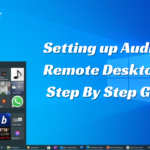The 7 Key Elements of Effective Sales Proposals
- 1 The 7 Key Elements of Effective Sales Proposals
- 1.1 1. Executive Summary
- 1.2 2. Client Needs and Objectives
- 1.2.1 Key Components:
- 1.2.2 Tips for Addressing Client Needs:
- 1.3 3. Proposed Solution
- 1.4 4. Value Proposition and Benefits
- 1.5 5. Implementation Plan
- 1.6 6. Pricing and Terms
- 1.7 7. Call to Action
- 2 Conclusion
A well-crafted sales proposal is a powerful tool in any sales professional’s arsenal. It can significantly influence decision-making, transforming potential leads into loyal customers. The importance of a meticulously prepared sales proposal cannot be overstated—it showcases the value of your product or service, aligns with the client’s needs, and sets the stage for a mutually beneficial relationship. This article will delve into the seven key elements that make a sales proposal effective.
The 7 Key Elements of Effective Sales Proposals
1. Executive Summary
The executive summary is the cornerstone of your sales proposal. It serves as a concise overview of what your proposal entails and highlights the key points that will be detailed further in the document. This section should capture the client’s attention and make a compelling case for why they should continue reading.
Key Components:
- Introduction: Briefly introduce your company and its mission.
- Problem Statement: Clearly outline the client’s problem or need.
- Proposed Solution: Summarize your proposed solution and its benefits.
- Value Proposition: Explain the unique value your solution offers over competitors.
- Next Steps: Indicate what the client should do next.
Tips for an Effective Executive Summary:
- Keep it brief but informative.
- Use clear and persuasive language.
- Please focus on the client’s needs and how your solution addresses them.
- Highlight the most critical points to encourage further reading.
2. Client Needs and Objectives
Understanding and articulating the client’s needs and objectives is crucial. This section demonstrates that you have done your homework and are genuinely interested in solving the client’s problems.
Key Components:
- Needs Analysis: Detail the specific needs and pain points of the client.
- Objectives: Outline the client’s short-term and long-term goals.
- Current Situation: Provide a brief overview of the client’s current situation and challenges.
Tips for Addressing Client Needs:
- Conduct thorough research to understand the client’s industry, market position, and challenges.
- Use data and insights from your interactions with the client.
- Show empathy and a genuine interest in helping the client succeed.
3. Proposed Solution
This is the heart of your sales proposal. It details how your product or service will address the client’s needs and help them achieve their objectives. Your proposed solution should be tailored specifically to the client, emphasizing the unique benefits and outcomes they can expect.
Key Components:
- Solution Description: Provide a detailed description of your product or service.
- Features and Benefits: Highlight the key features and their associated benefits.
- Implementation Plan: Outline the steps involved in implementing your solution.
- Timeline: Provide a realistic timeline for implementation.
- Cost: Include a transparent and detailed cost breakdown.
Tips for an Effective Proposed Solution:
- Customize your solution to align with the client’s specific needs.
- Use visuals, such as diagrams and charts, to illustrate your points.
- Be clear and concise, avoiding unnecessary jargon.
- Emphasize the tangible benefits and ROI (Return on Investment) the client will gain.
4. Value Proposition and Benefits
Your value proposition is what sets you apart from the competition. It should communicate why your solution is the best choice for the client and the benefits they will receive.
Key Components:
- Unique Selling Points (USPs): Identify what makes your solution unique.
- Tangible Benefits: Detail the specific, measurable benefits the client will gain.
- ROI: Provide an estimate of the return on investment the client can expect.
- Case Studies/Testimonials: Include real-world examples and testimonials from satisfied customers.
Tips for Articulating Your Value Proposition:
- Focus on the benefits that matter most to the client.
- Use data and evidence to support your claims.
- Highlight any competitive advantages your solution offers.
- Ensure your value proposition is clear and easily understood.
5. Implementation Plan
A practical implementation plan reassures the client that you have a clear strategy for deploying your solution. It outlines the steps, timeline, and resources required, giving the client confidence in your ability to deliver on your promises.
Key Components:
- Project Phases: Break down the implementation into manageable phases.
- Milestones: Identify key milestones and deliverables.
- Roles and Responsibilities: Define the roles and responsibilities of both your and the client’s teams.
- Resources Required: Detail any resources or support needed from the client.
- Timeline: Provide a detailed timeline for each phase of the implementation.
Tips for a Robust Implementation Plan:
- Be realistic about timelines and resource requirements.
- Ensure clarity and transparency in your plan.
- Include contingency plans for potential challenges.
- Demonstrate your experience and expertise in similar projects.
6. Pricing and Terms
Transparency in pricing and terms is essential to building trust with your client. This section should provide a detailed and precise breakdown of costs, payment terms, and other relevant financial information.
Key Components:
- Cost Breakdown: Provide a detailed breakdown of all costs associated with your solution.
- Payment Terms: Clearly outline the payment terms, including due dates and accepted payment methods.
- Additional Costs: Highlight any potential extra costs that may arise.
- Contract Terms: Summarize the key terms and conditions of the contract.
Tips for Presenting Pricing and Terms:
- Ensure your pricing is competitive and justified by the value provided.
- Be transparent and avoid hidden costs.
- Offer flexible payment options if possible.
- Communicate the terms and conditions to avoid misunderstandings.
7. Call to Action
The call to action (CTA) is a critical element that guides the client through the following steps. A well-crafted CTA can significantly influence the client’s decision to proceed with your proposal.
Key Components:
- Next Steps: Clearly outline what the client needs to do next.
- Contact Information: Provide your contact details for further questions or discussions.
- Timeline for Response: Indicate any deadlines or timelines for a response.
- Encouragement: Encourage the client to take action and express your enthusiasm for working together.
Tips for an Effective Call to Action:
- Be clear and specific about the desired action.
- Make it easy for the client to respond or get in touch.
- Use persuasive language to motivate the client.
- Highlight the benefits of taking action promptly.
Conclusion
Crafting an effective sales proposal is both an art and a science. It requires a deep understanding of the client’s needs, a clear and compelling presentation of your solution, and the ability to communicate value convincingly. By incorporating these seven key elements—executive summary, client needs and objectives, proposed solution, value proposition and benefits, implementation plan, pricing and terms, and call to action—you can create a sales proposal that not only captures the client’s attention but also convinces them that your solution is the best choice.
Remember, the ultimate goal of your sales proposal is to build trust and foster a strong relationship with the client. A well-prepared proposal can create a successful partnership and drive business growth.
















